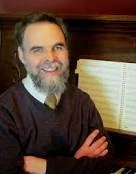 I mentioned over at the Musica Sacra Forum that between visiting two Masses as “Music Director” not leader on Trinity Sunday I had the inclination to walk across the boulevard to check out the 9am Service at the megachurch Assembly of God. I didn’t actually enter their sanctuary, but observed from cozy nooks with large flat screens and state of the art audio setups that ostensibly serve as cry rooms in the main “narthex.” I have to simply say that I was underwhelmed by the couple of songs that were stretched beyond their usefulness for P&W in my estimation, and then by the less than deft transition to the opening prayer by the pastor who serves as the church’s CFO. So I was relieved when a couple and their infant pulled up in their Escalade-like stroller and slinked out and back to the second Mass. I didn’t want to really fisk out what little I’d observed there, it wouldn’t be fair. But this morning my eye caught a headline link to an article at the eminent Catholic blog/magazine, First Things: “In Praise of Praise Music” by Stephen H. Webb, one of their contributing columnists. As First Things is primarily a subscription-based publication, I won’t reprint much of the article at all. However, Mr. Webb made four rather pointed concerns that compel me to respond. I was mildly surprised that his article was accepted by the editorship for its content alone, but hey, who am I to question authority? He does qualify the context of his premise by this quote:
I mentioned over at the Musica Sacra Forum that between visiting two Masses as “Music Director” not leader on Trinity Sunday I had the inclination to walk across the boulevard to check out the 9am Service at the megachurch Assembly of God. I didn’t actually enter their sanctuary, but observed from cozy nooks with large flat screens and state of the art audio setups that ostensibly serve as cry rooms in the main “narthex.” I have to simply say that I was underwhelmed by the couple of songs that were stretched beyond their usefulness for P&W in my estimation, and then by the less than deft transition to the opening prayer by the pastor who serves as the church’s CFO. So I was relieved when a couple and their infant pulled up in their Escalade-like stroller and slinked out and back to the second Mass. I didn’t want to really fisk out what little I’d observed there, it wouldn’t be fair. But this morning my eye caught a headline link to an article at the eminent Catholic blog/magazine, First Things: “In Praise of Praise Music” by Stephen H. Webb, one of their contributing columnists. As First Things is primarily a subscription-based publication, I won’t reprint much of the article at all. However, Mr. Webb made four rather pointed concerns that compel me to respond. I was mildly surprised that his article was accepted by the editorship for its content alone, but hey, who am I to question authority? He does qualify the context of his premise by this quote:
A note to the trads no doubt already heading for the comments: I am not talking about liturgical music.
Let’s look at his concerns. I will try to be brief with my remarks.
So why do so many Christians have such a condescending attitude toward praise music?
Because, for the most part, within or without it’s context as a congealing agent in a worship serve, it barely qualifies as “music” in the first place. Even the maligned (on YouTube) Kanon in D has melodic expeditions that are purposeful attempts to demonstrate how many layers of clothing the otherwise naked emperor can bear to wear. Webb makes a comparison between the “authenticity” of Stairway to Heaven trumping “Here I am to worship” without realizing that the Zepplin staple is a cornucopia of harmonic fruits versus the praise tune’s “Heart and Soul” progression of chords, over and over. Pachelbel, where are you when you’re really needed? Kanon is for many an anesthetic itself even fully realized. “Here I am….” is an ever increasing morphine drip when what the soul needs is an adrenaline shot to the heart; John Travolta, where are you when we need you?
All I am saying is that praise music should have a significant place in every Christian’s heart—or at least in their iPods.
This declaration has a much legs as the equally ineffective plea of my teen hero John Lennon’s plea “All we are saying is give peace a chance.” No, no, no. Praise music, to continue the above analogy, at best should be a mild and occasional palliative to be used to alleviate stress and strain, maybe. But if my heart is aching for any reason, depending upon what my mind and my soul determine ought to be the direction my emotional needs should take, on one extreme I’d rather have Barber’s “Adagio” express empathy for my angst, or Prokoviev’s (how im-Modest of me! H/T to John O) Mussogrsky’s* “Great Gate of Kiev” filling my eardrums as a sympathetic relief. Heck, even if I’m at peace, great chant such as from Heilingenkreuz Abbey, is a much better accompaniment to my soul through my earphones than MW Smith’s “Breathe.”
The words are too simple, direct, and demanding, the emotions too transparent.
For those who say rock and praise can’t coexist, listen to Leonard Cohen’s “Hallelujah.”
*Darn Russki’s, can’t keep ’em straight unless they’re Armenian! Oh, wait a minute, was the film scorer Dmitri Tiomkin or Dmitri Potemkin? Fuggedaboutit, I’m gonna go Khatchaturian, if I can find one.




